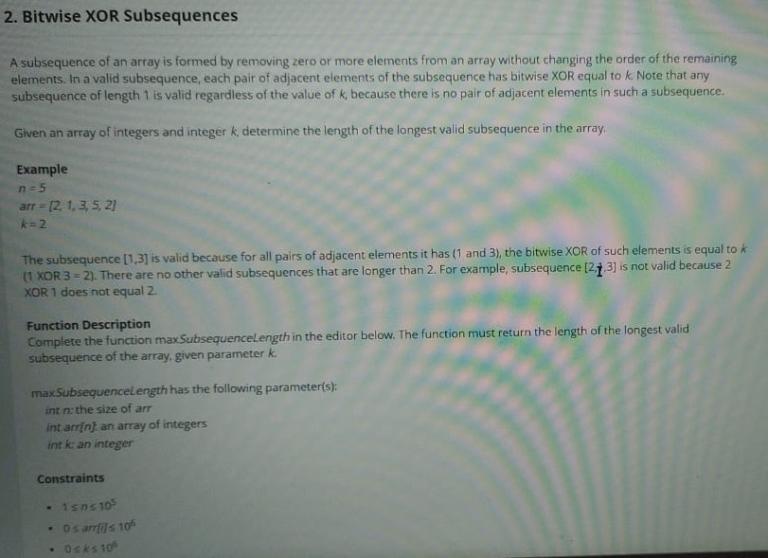Recently one of my friends shared this problem with me. I really found this beautiful and thought of giving it a share.I won't spoil the essence of this problem, but definitely expecting some nice approaches and solutions in the comment.

| # | User | Rating |
|---|---|---|
| 1 | tourist | 3856 |
| 2 | jiangly | 3747 |
| 3 | orzdevinwang | 3706 |
| 4 | jqdai0815 | 3682 |
| 5 | ksun48 | 3591 |
| 6 | gamegame | 3477 |
| 7 | Benq | 3468 |
| 8 | Radewoosh | 3462 |
| 9 | ecnerwala | 3451 |
| 10 | heuristica | 3431 |
| # | User | Contrib. |
|---|---|---|
| 1 | cry | 167 |
| 2 | -is-this-fft- | 162 |
| 3 | Dominater069 | 160 |
| 4 | Um_nik | 158 |
| 5 | atcoder_official | 157 |
| 6 | Qingyu | 155 |
| 7 | djm03178 | 151 |
| 7 | adamant | 151 |
| 9 | luogu_official | 150 |
| 10 | awoo | 147 |
Recently one of my friends shared this problem with me. I really found this beautiful and thought of giving it a share.I won't spoil the essence of this problem, but definitely expecting some nice approaches and solutions in the comment.

| Name |
|---|



Auto comment: topic has been updated by cryo_coder123 (previous revision, new revision, compare).
dp[i] = the longest subsequence from the first i element which has the condition (xor = k) and the last element in the subsequence is arr[i]. then dp[i] = dp[last (arr[i] ^ k)] + 1, and you can save what is the last x.
First if k=0 we can see the answer is the frequency of the element which occurs maximum number of times in the array. Else we can do the following:
First keep track of vector of positions of each element in the array. It is easy to see that the required subsequence must be of the form [x, x^k, x, x^k.....] for some 1<=x<=10^6. So just brute force for each possible value of x and greedily check the subsequence with maximum length we can obtain by using the vector of positions for x and x^k.
Time complexity: O(10^6) + O(n)
Ya did the same thing... have a look at my piece of code